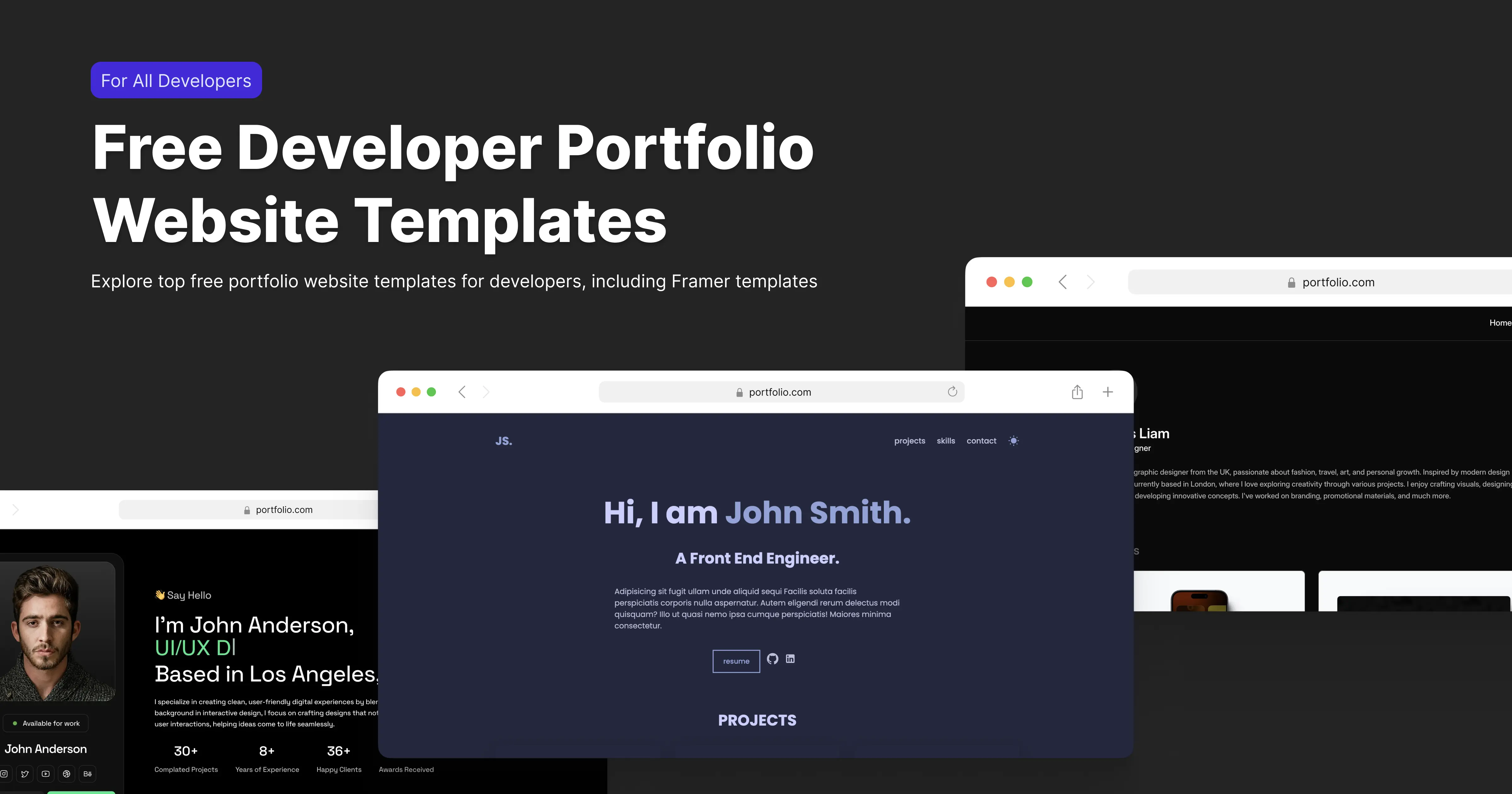Looking to launch a professional developer portfolio without starting from scratch? In this guide, we’ve curated the best free developer portfolio templates—from React and Next.js to Framer and plain HTML. Each template is hand-picked for design, responsiveness, and ease of customization. Whether you’re a frontend, backend, or full-stack developer, this guide helps you pick the right template and get online fast.
React / Next.js Templates
React and Next.js have become the backbone of modern developer portfolios. Using these technologies allows you to build fast, interactive, and SEO-friendly websites that showcase your projects dynamically.
With component-based design, reusable layouts, and powerful routing, these templates make it easy to create portfolios that not only look professional but also demonstrate your skills with cutting-edge frontend frameworks.
developerFolio (saadpasta) – Best for full-featured, professional portfolios
Pros:
- Feature-rich: sections for about, skills, education, projects, blogs, talks, podcasts, Twitter & GitHub integration.
- Quick customization via
src/portfolio.jsand_globalColor.scss. - Responsive layout with light/dark mode toggle.
- Widely used: 6k+ stars, thousands of forks, recommended by developers on Dev.to.
Cons:
- Not actively maintained; requires manual dependency updates.
- Needs Node.js / React knowledge.
- Default design can feel generic without tweaks.
Links: Preview & Download
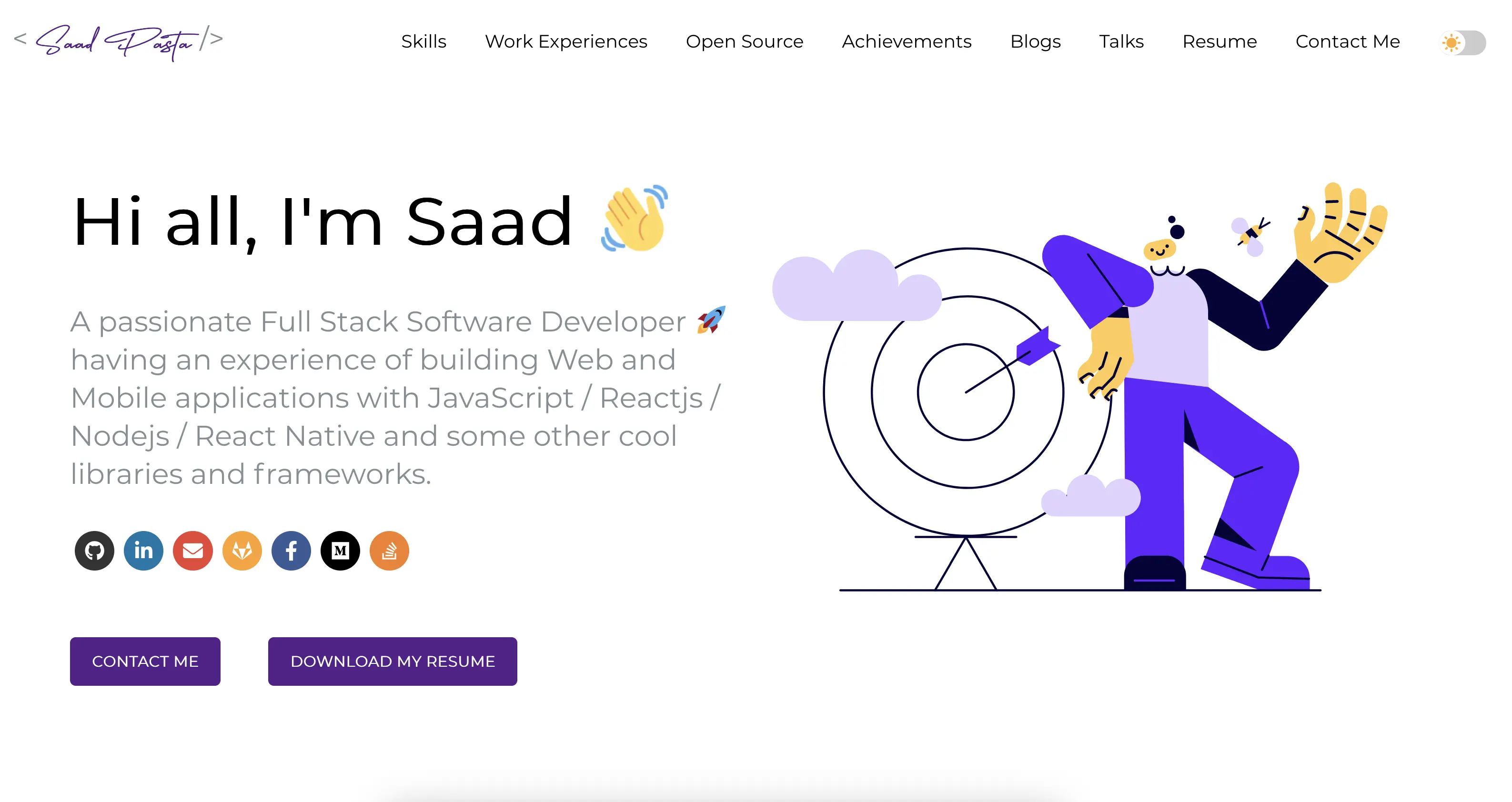
Next.js Developer Portfolio Starter (codebucks27) – Best for interactive, modern portfolios
Pros:
- Built with Next.js, Tailwind CSS, and Framer Motion.
- Polished animations and interactive UI elements.
- Light/dark mode toggle included.
Cons:
- Requires Next.js setup; not beginner-friendly.
- Slightly heavier due to animations.
Best for: Frontend devs wanting dynamic, recruiter-ready portfolios.
Links: Preview & Download
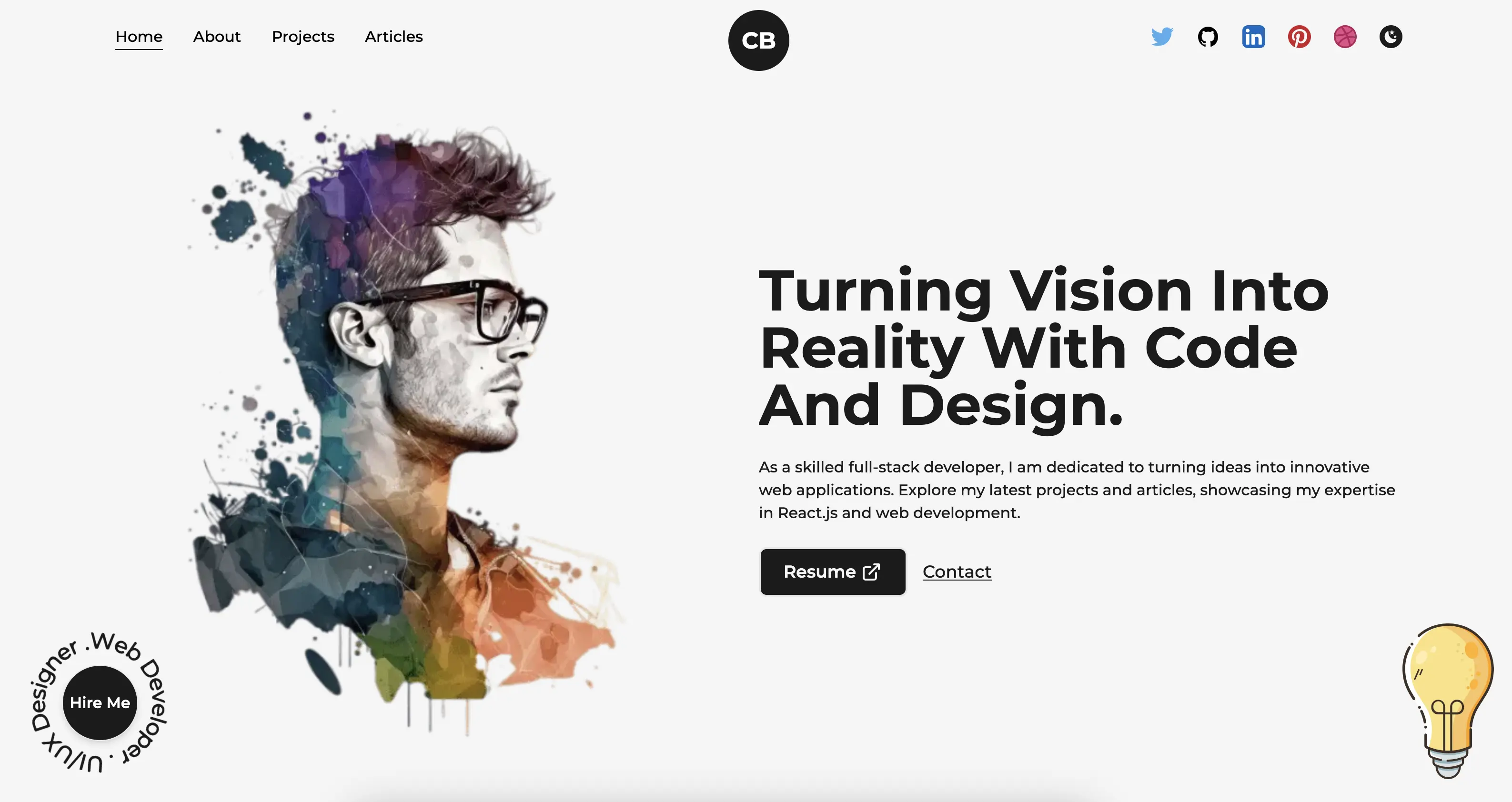
react-portfolio-template (chetanverma16) – Best for versatile, customizable portfolios
Pros:
- Minimalist React layout with sections for work, about, services, contact.
- Markdown-based blog integrated.
- Light/dark mode support.
Cons:
- Needs React setup.
- Default styling may require customization to stand out.
Best for: Developers who want flexibility to show projects + blog.
Links: Preview & Download
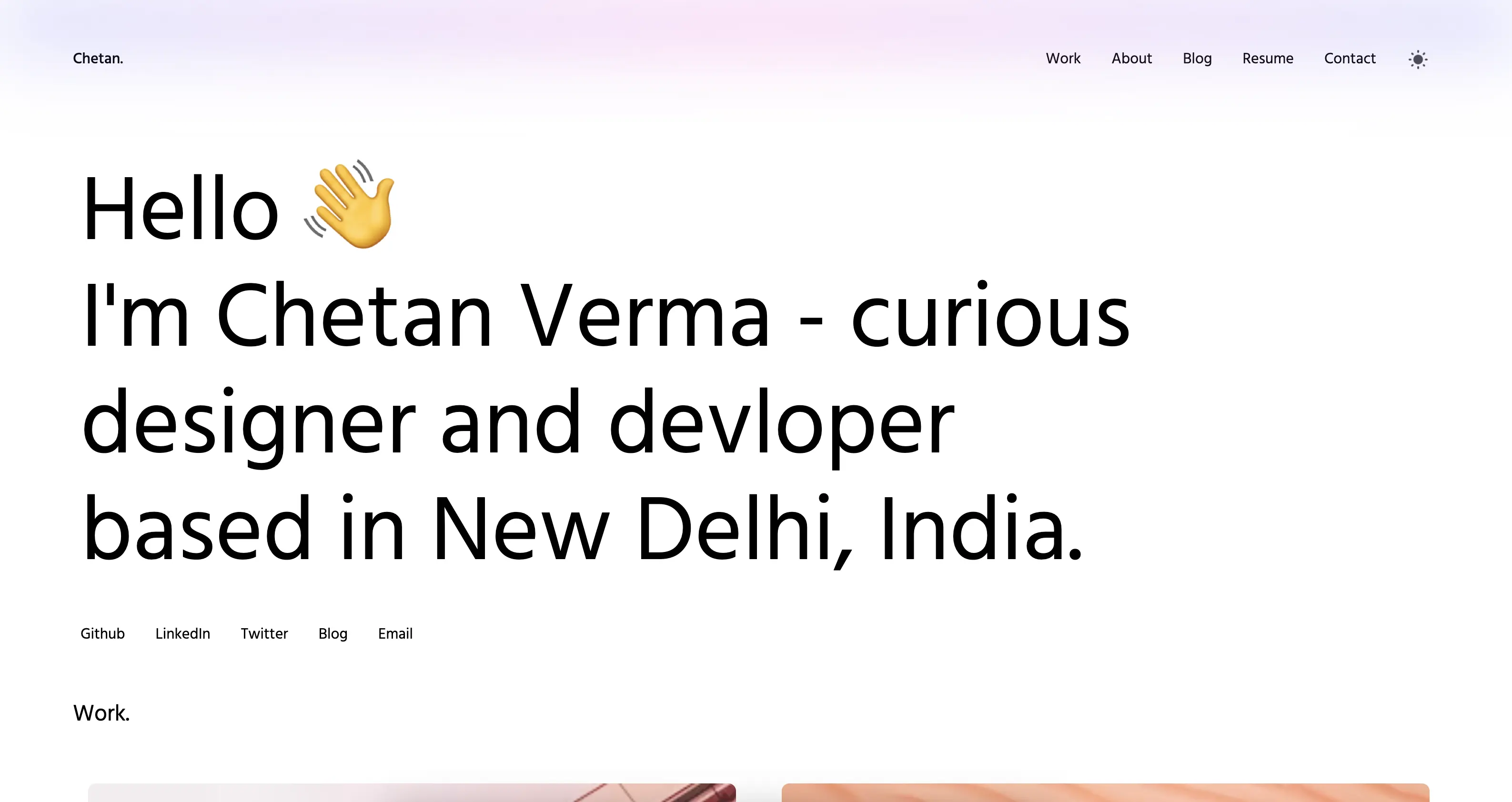
cleanfolio (rjshkhr) – Best for minimalists wanting simplicity
Pros:
- Clean React layout.
- Focuses attention on projects & skills.
- Light/dark mode supported.
Cons:
- Limited pre-built sections.
- React knowledge needed.
Best for: Developers who want a simple, distraction-free portfolio.
Links: Preview & Download
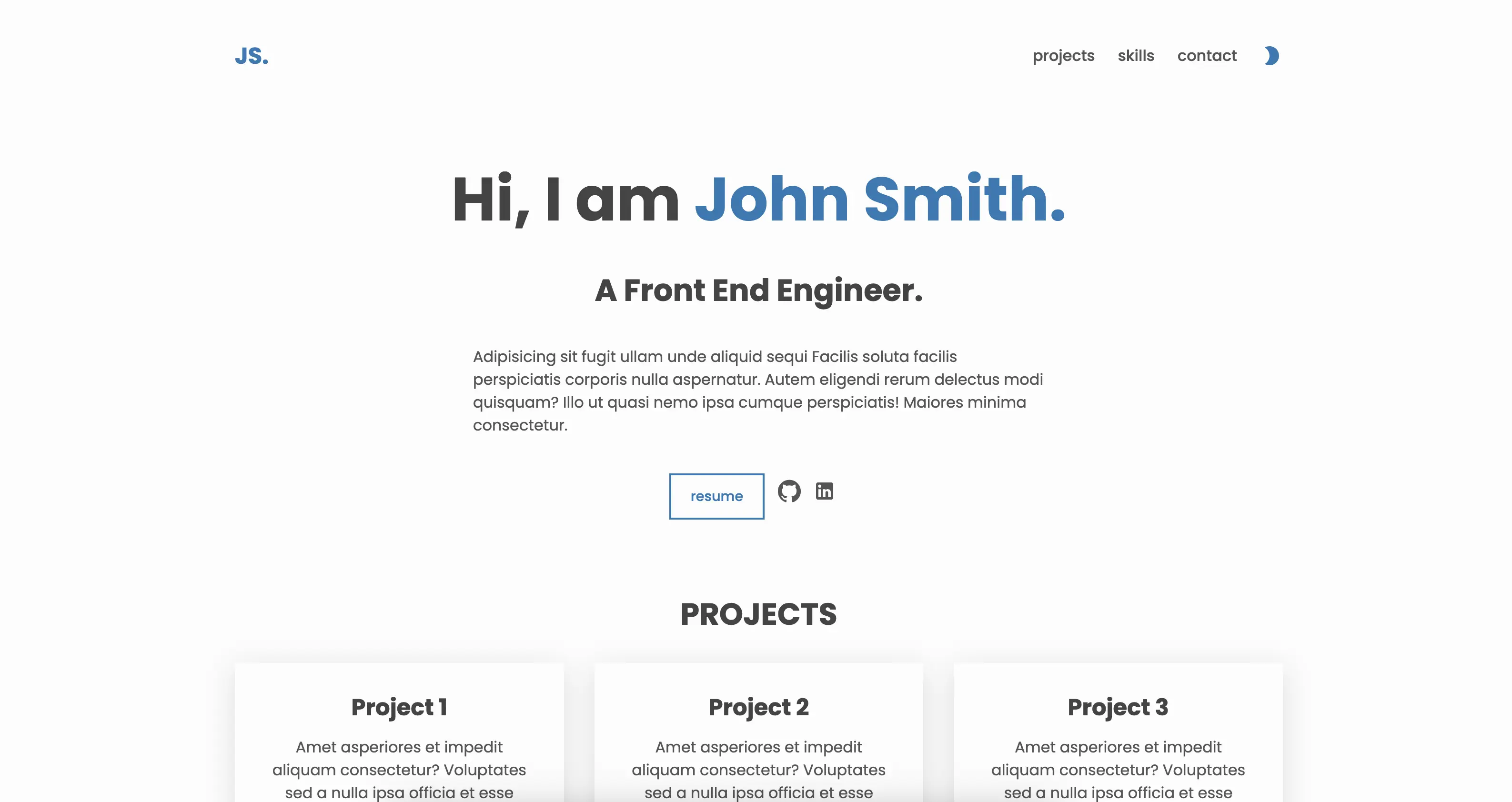
HTML / CSS Templates
Dopefolio (rammcodes) – Best for minimalists who want speed
Pros:
- Lightweight HTML + SCSS.
- Easy customization of colors, fonts, sections.
- Fast-loading and responsive.
Cons:
- No blog or CMS support.
- Limited interactivity.
Best for: Backend/full-stack devs who want a simple business-card portfolio.
Links: Preview & Download
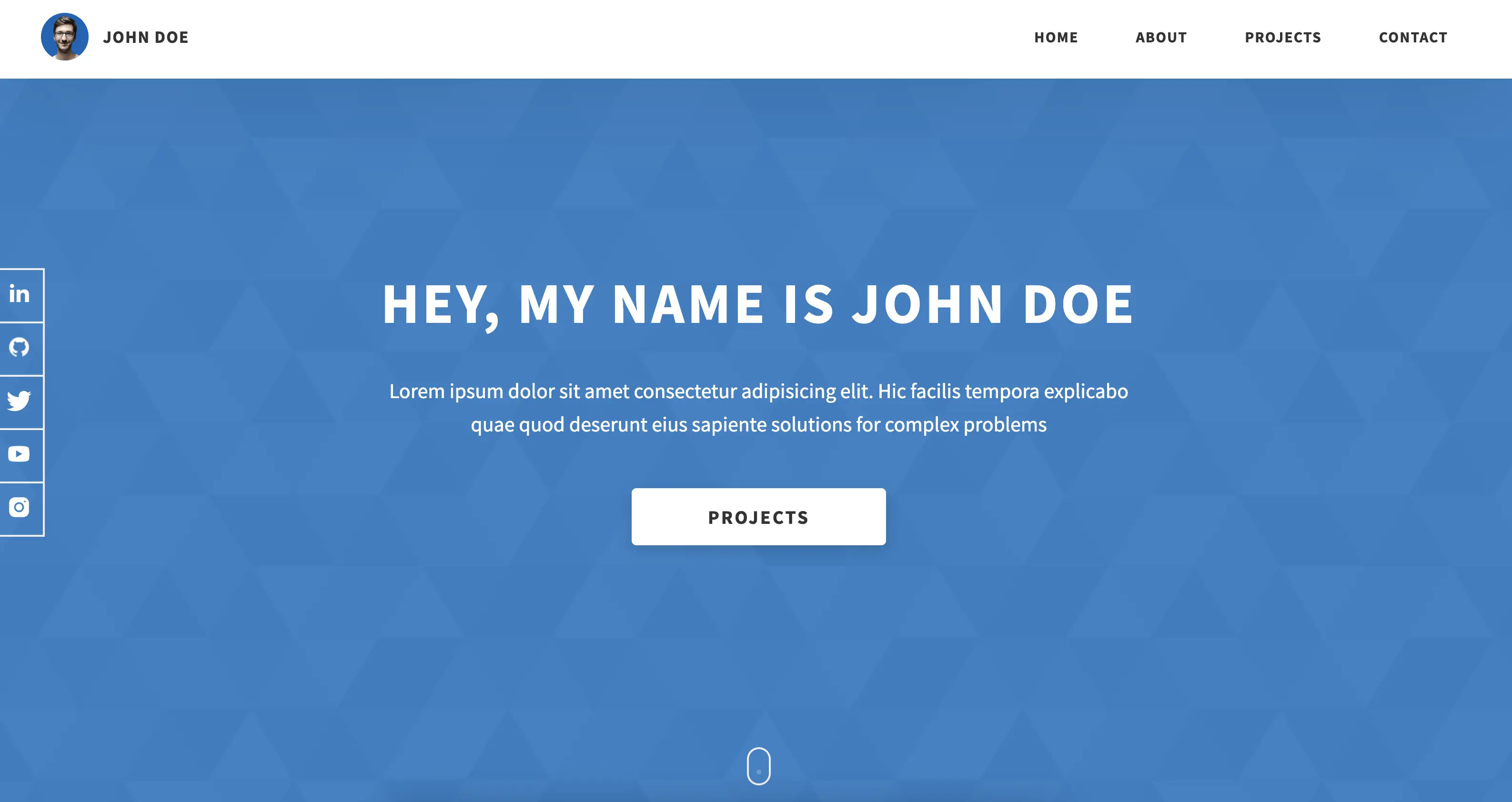
WebPortfolios.dev Minimal Portfolio Template – Best for simple, no-fuss portfolios
Pros:
- Ultra-lightweight and fast-loading.
- Clean, minimalist design keeps focus on projects.
- Subtle animations add polish without overwhelming.
- Easy to deploy and customize quickly.
- Beginner-friendly — perfect for developers just starting with web development.
Cons:
- Limited features and sections (no blog or advanced components).
- Minimal interactivity — primarily static content.
- Not ideal for developers with many projects or complex workflows.
Best for:
- Developers who want a professional, distraction-free portfolio.
- Beginners or anyone who wants a quick, polished online presence.
Links: Preview & Download
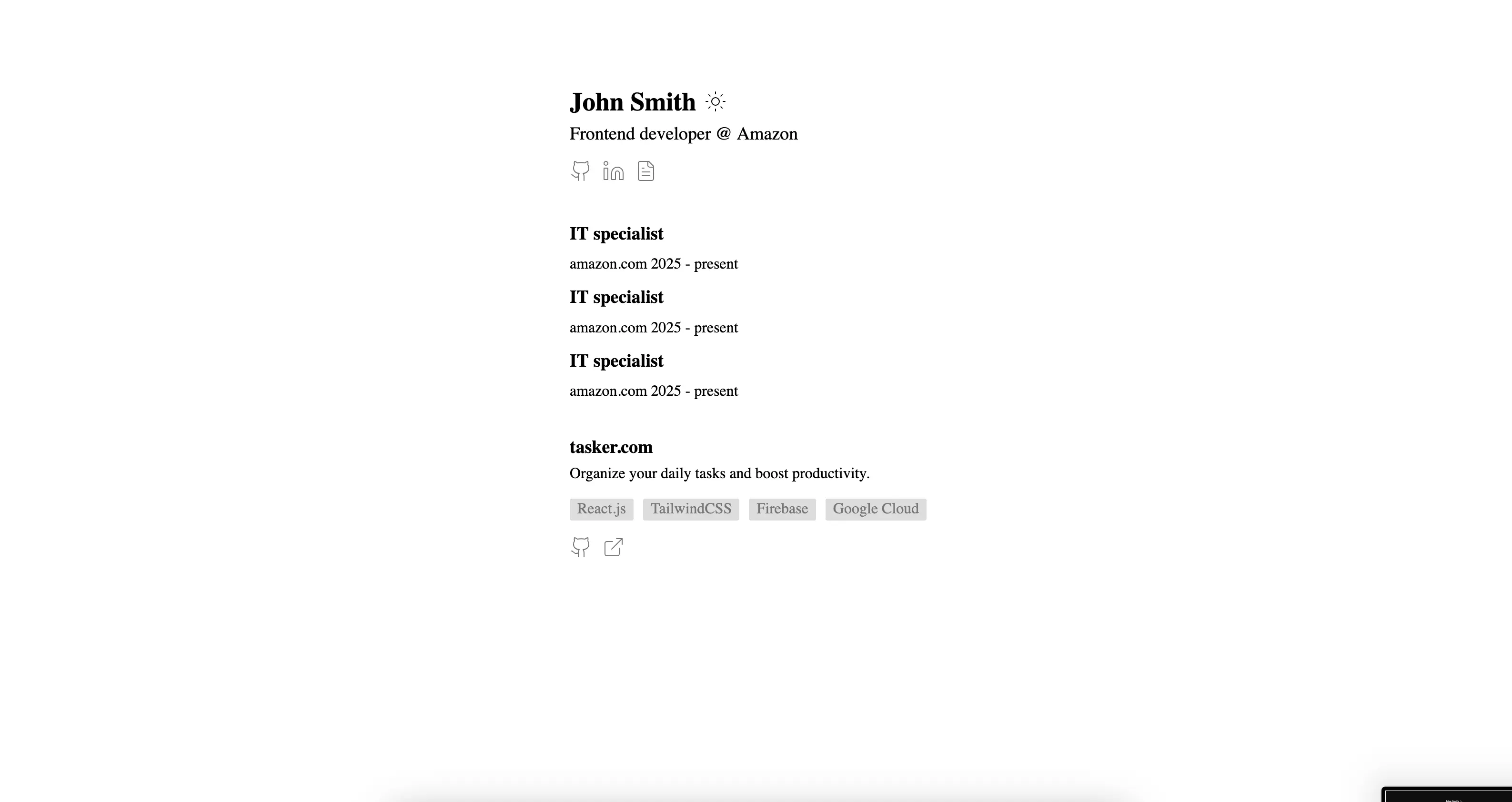
Framer Templates
Pearl – Best for creative, visual portfolios
Pros:
- Drag-and-drop editing.
- Responsive and visually polished.
- Easy to deploy via Framer Publish.
Cons:
- Less flexibility for advanced coding.
- SEO can be trickier than static HTML/React.
Best for: Designers or devs who want pixel-perfect portfolios quickly.
Links: Preview & Download
Visual:
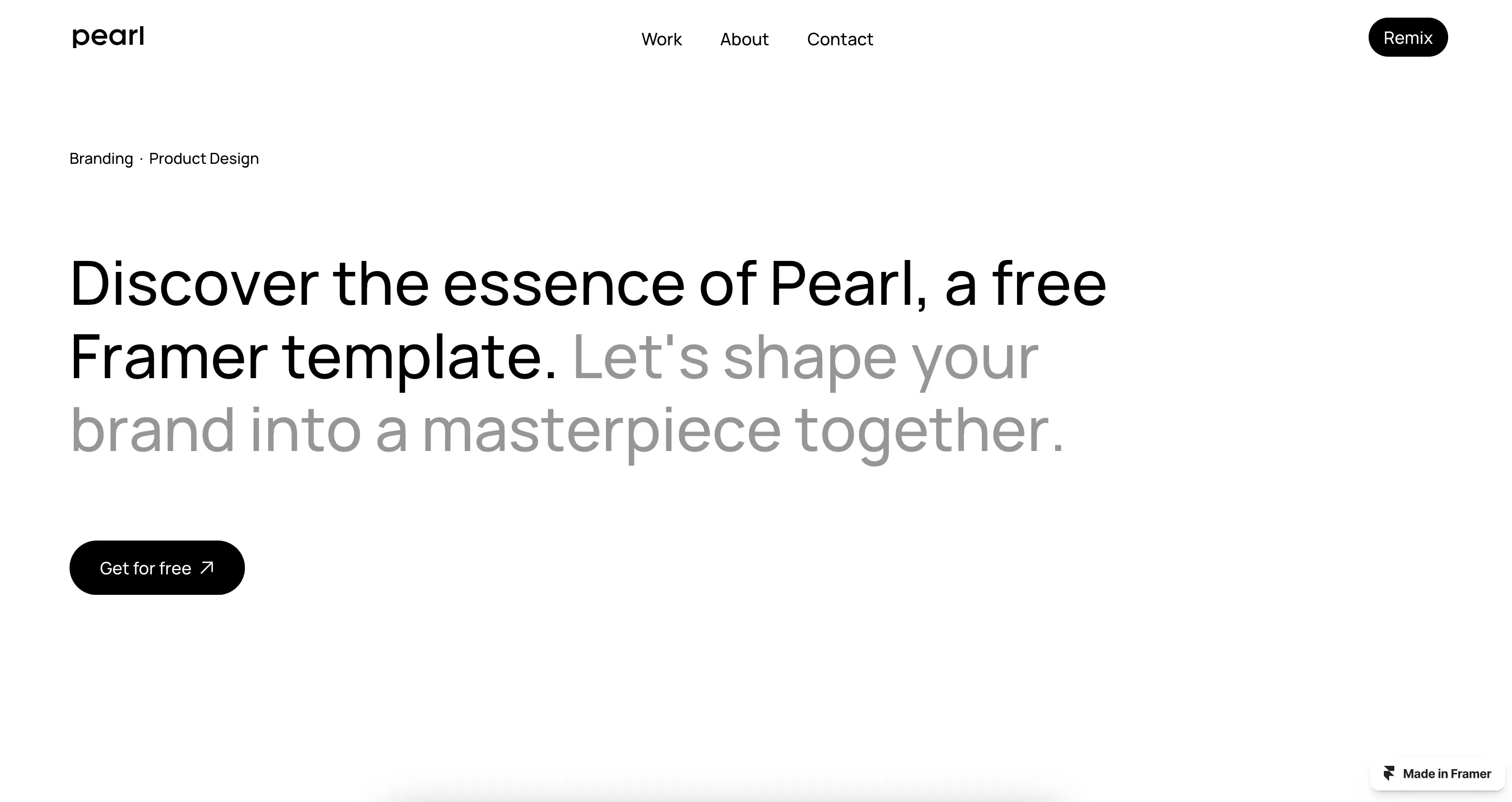
ResuMate – Best for resume-style portfolios
Pros:
- Focused on professional experience.
- Modern layout, responsive.
- Easy Framer customization.
Cons:
- Less suitable for project-heavy portfolios.
Best for: Job-seekers wanting a clean CV-style portfolio.
Links: Preview & Download
Visual:
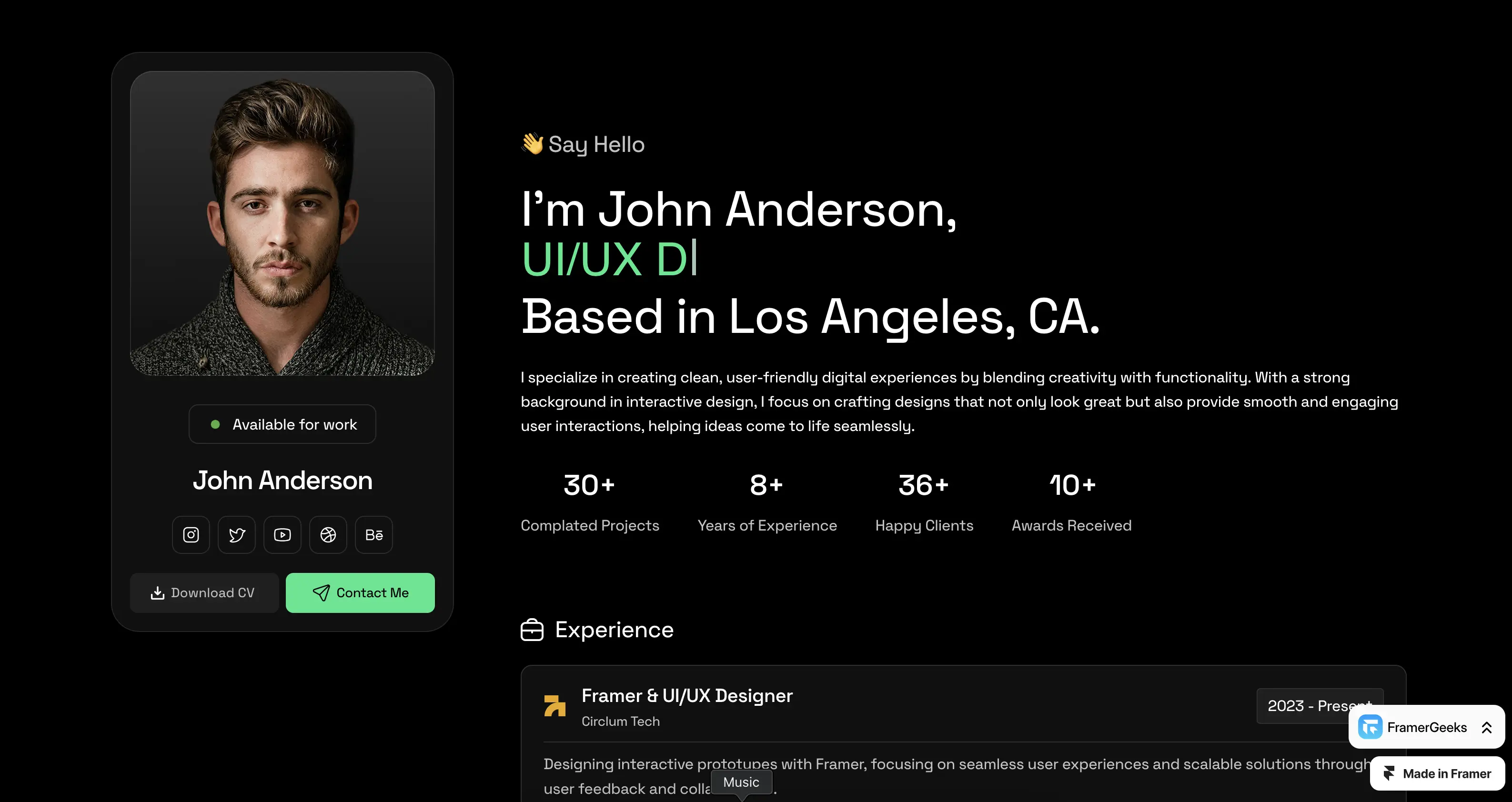
Greyforge – Best for showcasing services & projects
Pros:
- Sleek, versatile design.
- Responsive across devices.
- Minimalist but functional.
Cons:
- Could feel empty if you only have 1–2 projects.
Best for: Full-stack devs or freelancers with multiple projects/services.
Links: Preview & Download
Visual:
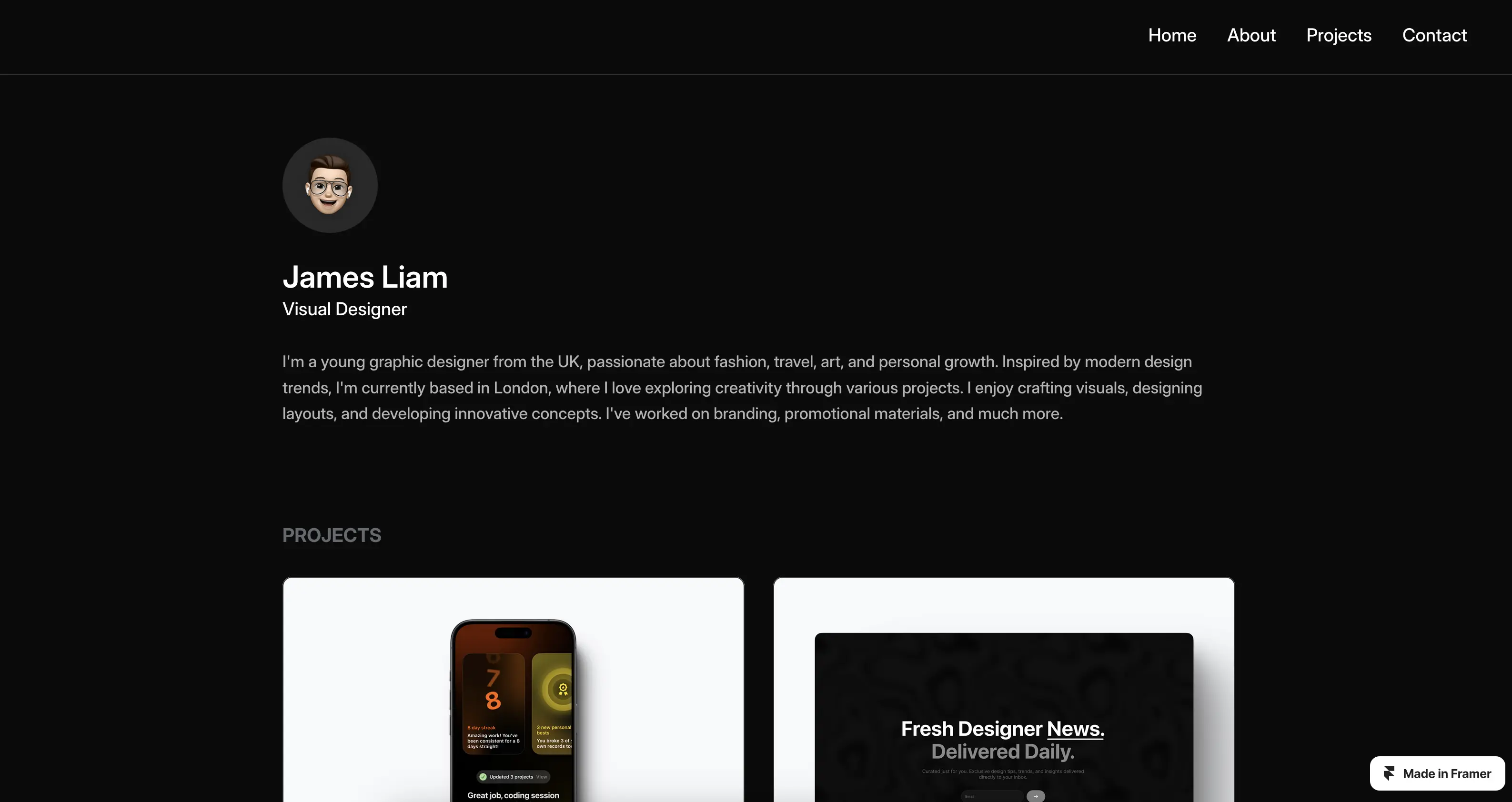
Pearce – Best for one-page CV portfolios
Pros:
- Straightforward, simple one-page CV layout.
- Clean sections for experience, skills, contact.
Cons:
- Limited visual flair.
- Not ideal for large portfolios.
Best for: Developers introducing themselves to potential employers quickly.
Links: Preview & Download
Visual:
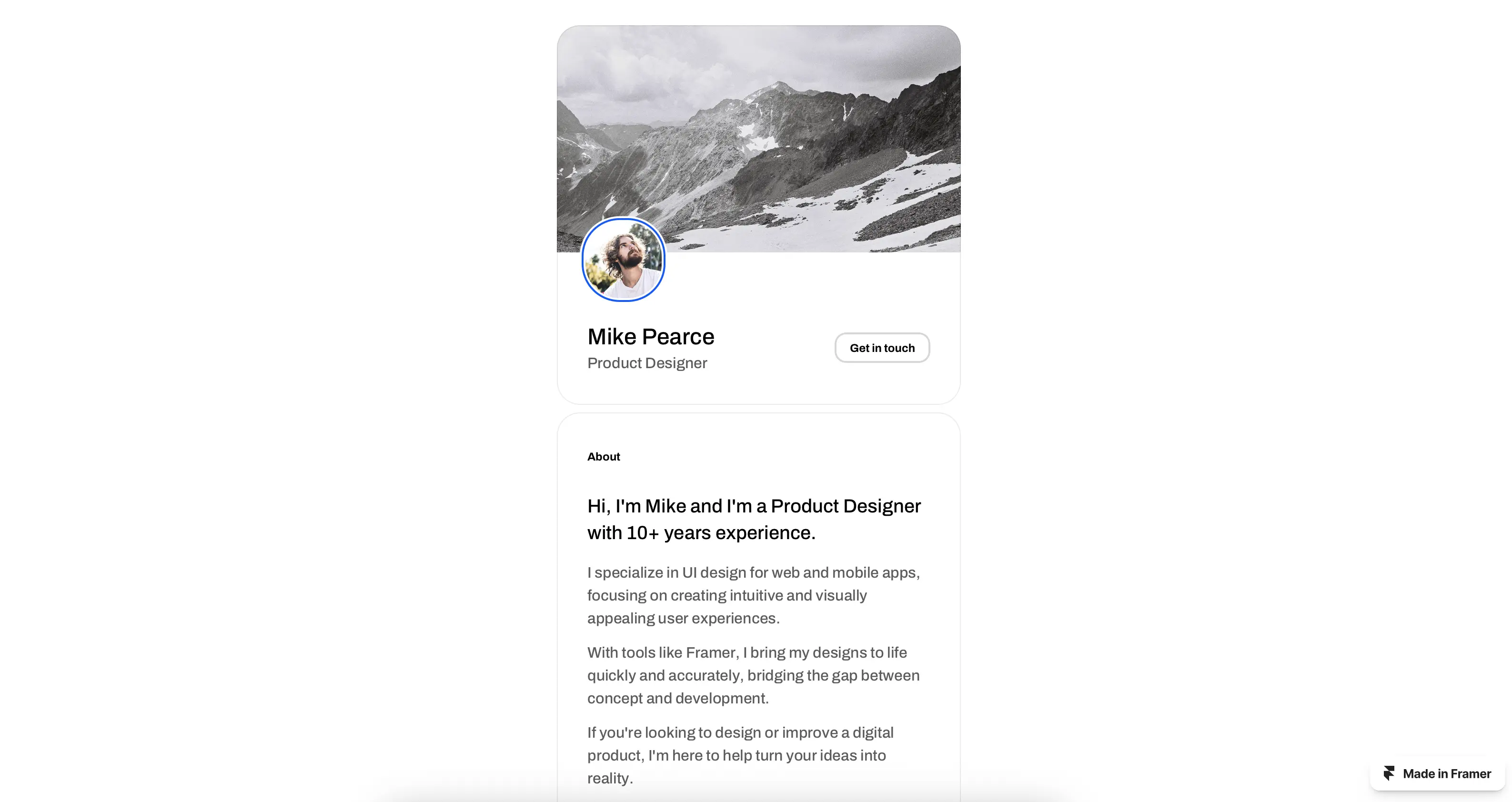
How to Choose the Right Web Developer Portfolio Template
With so many templates available, picking the right one can feel overwhelming. You might be asking yourself:
- "Should I clone a template and customize it?"
- "Does it support accessibility and SEO?"
- "Is a website builder a better option?"
To help, here are key factors to consider:
-
Design & Aesthetics
Choose a template with a clean, modern design that reflects your personal brand. Colors, fonts, layouts, and images should be easy to customize. -
Content Layout
The template should clearly highlight your projects, skills, and contact information, making it easy for visitors to understand your work. -
User Experience
Good information architecture, intuitive navigation, responsive design, and fast loading speeds create a strong first impression.
How to Edit Your Portfolio Template
Editing a portfolio template depends on the technology it was built with. Here’s a general guide for the most common types:
React-Based Templates
- Locate configuration files – Many templates include a
src/portfolio.jsorsrc/config.jswhere you can update your name, bio, skills, and project information. - Update components – Each section (projects, skills, contact) is usually a separate React component. Modify JSX or Tailwind classes to adjust layout or styling.
- Install dependencies & run locally – Use
npm installoryarn installto install packages, andnpm start/yarn devto preview changes. - Deploy changes – After editing, rebuild your site (
npm run buildoryarn build) and deploy to Vercel, Netlify, or GitHub Pages.
HTML-Based Templates
- Open HTML files – Use any text editor or IDE to edit HTML, CSS, and JS files directly.
- Customize content – Replace placeholder text, images, and links with your own projects, bio, and contact info.
- Adjust styles – Modify CSS or SCSS files to change colors, fonts, spacing, and layout.
- Preview locally – Open HTML files in a browser or use a local server to preview changes.
- Deploy – Upload your updated files to GitHub Pages, Netlify, or any static hosting service.
Framer-Based Templates
- Open in Framer – Sign in and open the template in the Framer editor.
- Drag & drop editing – Customize components visually: change text, replace images, and rearrange sections.
- Add interactivity – Use built-in animations, interactions, and code overrides if desired.
- Preview & publish – Framer lets you preview your portfolio on any device and publish directly to a custom domain or Framer’s hosting.
Editing a portfolio template is easier than building from scratch. Start by customizing your name, bio, and featured projects, then tweak design and layout to reflect your personal brand. Over time, you can add new sections, animations, or integrate additional tools as needed.
How to Deploy Your Portfolio Template
Now that you have completed editing your portfolio template, it's time to choose which service to deploy your website to.
Below are some of the best and most trusted services amongst developers and their requirements.
- Vercel: Best for Next.js/React projects.
- Netlify: Easy drag-and-drop deployment for static sites.
- GitHub Pages: Free hosting for static HTML/CSS templates.
- Framer Publish: One-click publishing directly from Framer.
Conclusion
A developer portfolio is your personal brand. With these free, high-quality templates, you can launch a professional online presence in hours—not days. Choose the right template, customize it thoughtfully, and make it your own.
